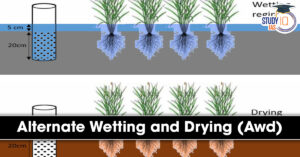Table of Contents
Context: In light of the rapid depletion of the cryosphere caused by climate change, the World Meteorological Organization (WMO) has called for urgent action, increased global investment, research collaboration, and data exchange.
What is the Cryosphere?
- The cryosphere refers to the portion of the Earth’s surface and atmosphere that is composed of frozen water.
- The term “cryosphere” comes from the Greek word “kryos,” meaning cold or frost.
- Ice and snow on land are one part of the cryosphere.
- This includes the largest parts of the cryosphere, the continental ice sheets found in Greenland and Antarctica, as well as ice caps, glaciers, and areas of snow and permafrost.
- When continental ice flows out from land and to the sea surface, we get shelf ice.

- The other part of the cryosphere is ice that is found in water.
- This includes frozen parts of the ocean, such as waters surrounding Antarctica and the Arctic.
- It also includes frozen rivers and lakes, which mainly occur in polar areas.
Significance of the Cryosphere
- Climate Regulation: The primary role of the cryosphere in the global climate system is known as ‘Albedo’.
- The albedo is the process through which solar rays are reflected back to space from the shiny white surfaces of the cryosphere.
- The high albedo of ice and snow prevents the absorption of solar energy, which helps maintain cooler global temperatures.
- Source of Freshwater: The cryosphere contains approximately 69% of the world’s freshwater, primarily stored in glaciers, ice caps, and ice sheets.
- Thus, it plays a crucial role in maintaining global water availability and serves as a primary source of freshwater for drinking, agriculture, and other human activities.
- Carbon Storage: Arctic permafrost stores twice the carbon in the atmosphere today, amounting to about 1400-1600 billion tons of carbon.
- Permafrost is the land that remains frozen for at least two years.
- Ecosystems: The cryosphere supports diverse ecosystems, especially in polar regions.
- For instance, the Arctic holds more than 14,000 terrestrial species including its flora and fauna.
- Achieving SDGs: The cryosphere is intricately linked to several United Nations Sustainable Development Goals (SDGs), including:
- SDG 13 (Climate Action) due to its role as a critical indicator and driver of climate change,
- Its impact on freshwater resources (SDG 6), and biodiversity (SDG 15).
Impacts of Climate Change on Cryosphere
- Cryosphere loss due to global warming: The cryosphere is sensitive to the changing climate, especially global warming, due to greenhouse gases.
- The IPCC Special Report on the Ocean and Cryosphere in a Changing Climate states that “over the last decades, global warming has led to widespread shrinking of the cryosphere”.
- According to the WMO’s State of global climate report 2022, cumulative thickness of glaciers around the world has plummeted by 30 meters since 1970.
- Similarly, Antarctic Sea ice plummeted to the lowest level ever recorded and is 1 million kilometer2 below the long-term mean (from 1991 to 2020).
- The Arctic Sea ice has also recorded the lowest monthly ice extent in satellite records.
- Also, the glaciers in the Hindu-Kush Himalayan (HKH) region are retreating at an alarming rate.
- Sea level rise: The melting of glaciers and ice sheets, along with the thermal expansion of seawater as it warms, leads to rising sea levels, posing threat to coastal communities.
- WMO says, sea level rise has touched a new record high in 1993-2022.
- The mean sea level rise doubled from the decade 1993-2002 (2.27 millimetres per year) to the last one, 2013-2022 (4.62 millimetres per year).
- Glaciers, Greenland and Antarctica ice sheet melting accounts for about 50% of the global sea level rise.
- Thawing of Permafrost: WMO terms the permafrost as the sleeping giant of greenhouse gases.
- The melting of Arctic permafrost (which stores double the carbon as in the atmosphere) increases the risk of releasing the gases and hence causing cascades of natural hazards.
- The melting of the permafrost, in the range of 1.5-degree Celsius temperature rise (as per the Paris Agreement), is estimated to cause carbon dioxide emission of 150-200 gigatonnes.
- Climate Feedback Loop: As ice and snow melt, darker surfaces like open water and exposed land are revealed, initiating a climate feedback loop where these surfaces absorb more sunlight and heat, thus further accelerating warming.
- Changes in Ocean Circulation: The melting of ice, especially from glaciers and ice sheets, contributes to changes in ocean circulation patterns.
- This can affect global ocean currents, which play a vital role in distributing heat around the planet and influencing regional climates.
- Socio-Economic Impacts: Loss of mountain glaciers and snow, especially in mid-latitude and tropical regions, impact more than three billion people.
- Changes are especially acute in the northern Andes, western U.S., Scandinavia, and the Alps; where economic activities such as agriculture, power generation and tourism depend on a rapidly shrinking mountain cryosphere.
- Changes in the Hindu Kush Himalaya have negative direct and indirect impacts on over two billion people: ranging from changes in water availability, to flooding and landslides from a deadly combination of extreme rainfall and heightened meltwater, especially in the spring and summer months.
Initiatives on Cryosphere
| Global initiatives |
|
| Initiatives by India |
|
Way Forward
- Need for global efforts: Protecting the cryosphere through vigorous climate action is not a matter for mountain and polar nations alone: it is a matter of urgent global concern, because the greatest impacts on human communities lie well outside these regions.
- Limiting the global temperature rise: Limiting global warming to 1.5°C is our best option to limit cryosphere losses and the resulting chain of potential catastrophes.
- The need to make pre-2030 emissions reductions a matter of urgency is an imperative for the benefit of all our societies.


 Defence Acquisition Council (DAC): Role,...
Defence Acquisition Council (DAC): Role,...
 Alternate Wetting and Drying (AWD): A Cl...
Alternate Wetting and Drying (AWD): A Cl...
 Makaravilakku Festival: Significance, Ri...
Makaravilakku Festival: Significance, Ri...

























